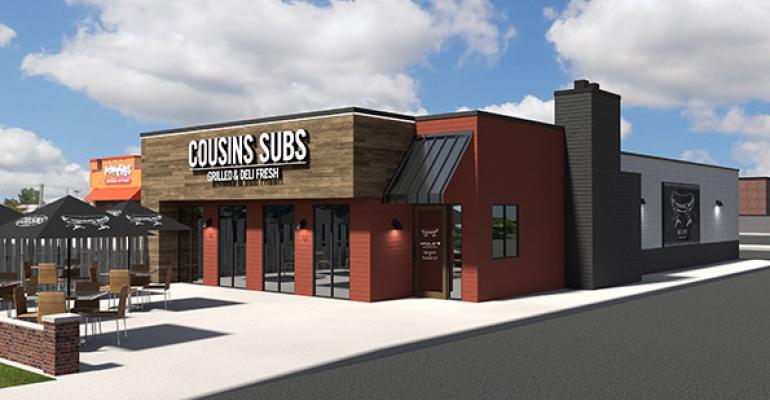In 2011, coming off the worst recession for the restaurant industry in modern history, Cousins Subs made a key decision in a bid to jumpstart its growth: It got smaller.
The Milwaukee-based sandwich chain shuttered 41 locations, or about 30 percent of the company’s then 145 locations, through a combination of closures and franchisee terminations and non-renewals, all in an attempt to move forward with a smaller, stronger group of restaurants and operators.
“It’s never easy to close units,” Cousins Subs CEO Christine Specht said. “But we really felt it was time to be very strategic about our location decisions, where we want to go forward, and who our franchise partners are.
[CHARTBEAT:3]
“It’s like trimming the tree to promote new growth.”
The strategy appears to be working. The 104-unit chain has recorded nine straight quarters of same-store sales growth. Same-store sales have risen a cumulative 16 percent from 2011 through 2015, and average unit volumes have increased by a third over that time, to $600,000.
Cousins is now embarking on a major rebranding and remodeling initiative, and is looking to add new locations, both through franchising and through company ownership.
 “We feel it’s right,” Specht said. “We have a stronger system as a whole and a stronger franchisee base. Sales are up. Unit volumes are up. The next step is certainly growth. It’s important for a thriving brand.”
“We feel it’s right,” Specht said. “We have a stronger system as a whole and a stronger franchisee base. Sales are up. Unit volumes are up. The next step is certainly growth. It’s important for a thriving brand.”
Unit closures were a common, quiet tactic that restaurant chains used in the aftermath of the recession. With sales faltering, many concepts halted unit growth altogether to get sales in the right direction. But a few deliberately took steps to reassess their unit and franchisee base and close underperforming locations or exit weak markets.
While that might seem counterintuitive, the strategy can spread a brand’s customer base over a smaller group of locations. It improves the finances of the company, which is burdened with fewer money-losing units. And it improves the finances of a brand’s strongest operators, who are more likely to expand or remodel.
Cousins Subs was founded in 1972 by Bill Specht and his cousin, Jim Sheppard. Christine Specht worked at the restaurants as a teenager, but served as a legislative analyst after earning a master’s degree in public administration. She returned to the company in 2001 to lead Cousins’ human resources department, and took over as CEO in 2008 after her father retired.
While the company was working to cull its restaurant base, it also started working on a new menu. Cousins cut some menu items. The traditional sub chain got rid of microwaves and added grills at most restaurants. It then introduced a new line of grilled subs that can be made with chicken or steak, and improved existing items, adding more steak to its cheesesteak line and introducing Wisconsin cheese curds.

“I think we’ve been really thoughtful about the product we’ve been carrying,” Specht said. “We’re taking that one step further.”
The company is also working on a major remodeling and rebranding initiative that seeks to have every restaurant under the same new image within a decade.
One of the missing ingredients in Cousins’ system has been a singular design of its restaurants.

“After 44 years, we felt it was time to put our best foot forward,” Specht said. “We wanted to make sure we had a similar look and feel across all the locations.”
The company has introduced a complete redesign of its exterior, packaging and uniforms in a reimage called “The Milwaukee Sub Shop.”
The new design includes earth tones, wood features and industrial finishes. The menu board design highlights new items. Messages define the company’s cuisine philosophy and culture.
Some select locations will also have a make line in front of customers, known as “Project Henry,” so diners can watch their sandwiches being made.
Cousins has already remodeled 21 locations, and expects 32 units to have the new design by the end of the year, with 60 percent remodeled by 2020 and completion by 2026. The company will require franchisees to remodel when they renew their franchise agreement. It is also working to remodel company locations.
The remodeling “highlights our Midwestern roots and gives us an opportunity to talk about our history,” Specht said.
The performance of the early locations with the remodel has ranged, with some seeing same-store sales growth as high as 18 percent. Others simply held their sales ground amid intensified competition in their market. But executives have been pleased with the results.
“We’ve seen terrific [same-store] sales,” Specht. “Guests are really enjoying the new environment.”
Contact Jonathan Maze at [email protected]
Follow him on Twitter: @jonathanmaze





